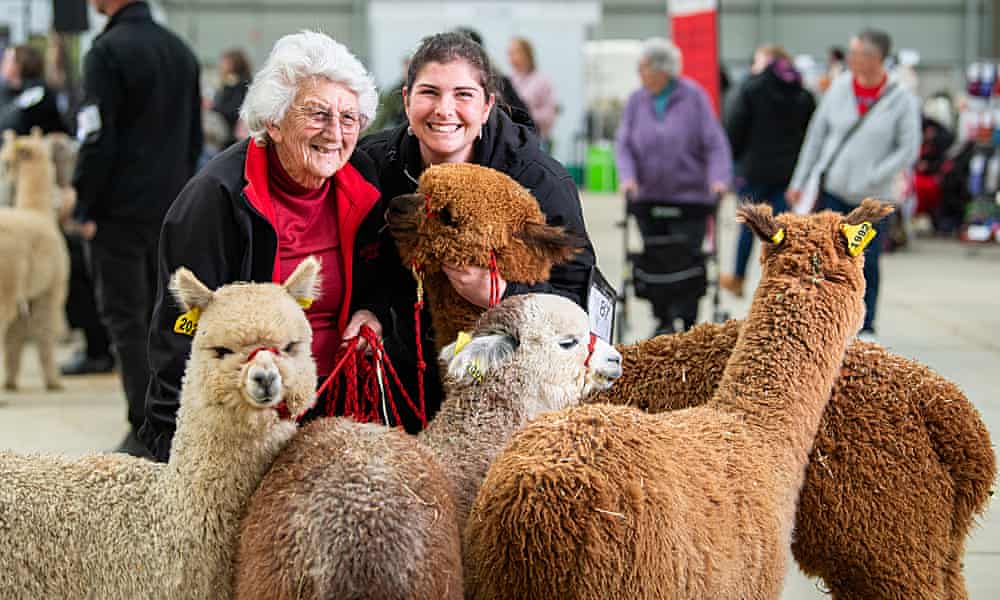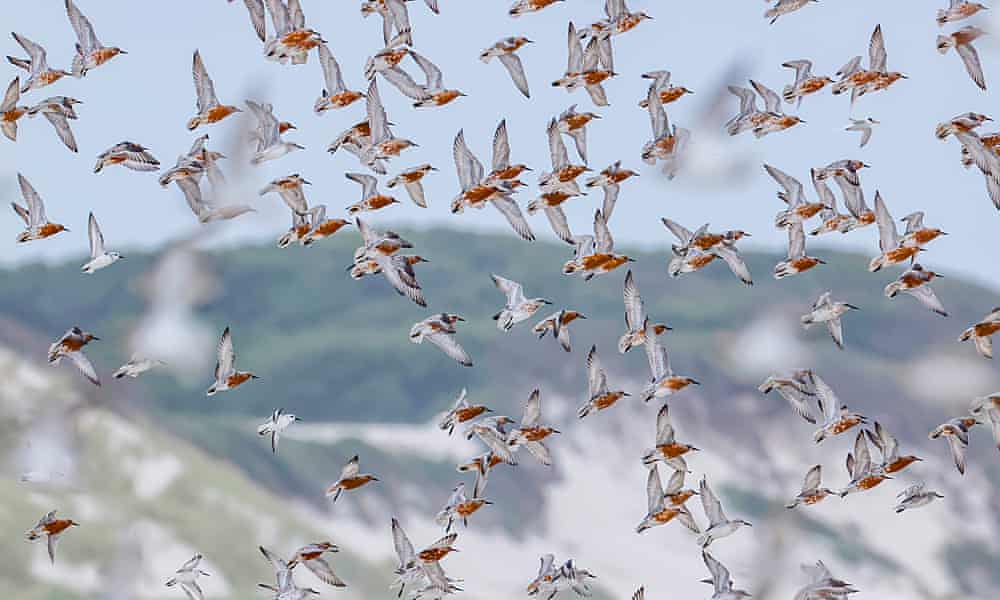|
Power independent journalism
|
|
|


| |
|
|
|
Dear reader, you can now get breaking news alerts sent directly to your inbox. Sign up here.
Newsletters may contain info about charities, online ads, and content funded by outside parties.
|
|
|
|
| |
|
| Location, location, not that location |
|
 |
Dear Rural Networkers,
Coffs Harbour has one of the highest rates of housing stress in regional New South Wales. It's in dire need of new, affordable homes. So you would think the community would embrace plans to build up to 250 homes and 200 short-stay units in new multi-storey blocks – except that the proposed development is slated for a previously undeveloped stretch of foreshore. It's location, location, location in real estate – and sometimes, according to the locals, the location is just wrong.
Traditional owners say building on the foreshore, alongside sacred sites, will amount to a "desecration of the land" and some other locals say it would "change the whole character of the area".
Rural Networker Douglas Connor has been speaking to Gumbaynggirr elders as well as local councillors and the state MP. The mayor and MP both support the development, but a lengthy consultation process with the Gumbaynggirr Aboriginal community has found most were "strongly opposed" to the project. Aunty Yvette Pacey (pictured) told Doug:
“I have spent more than 12 years with these people, trying to convince them of the importance of the site, that we need to have cultural spaces preserved, and no one is listening."
You can read that full piece here.
To Queensland now, where farmers are still cleaning up dead livestock washed away in the floods back in March. It's an example of the growing toll that natural disasters are having on rural veterinarians, writes Ima Caldwell. As Dr Jeannet Kessels, a small animal veterinarian and the founder of Vets for Climate Action, told Ima, events like floods, bushfires and drought were placing even more pressure on overworked vets:
"Veterinarians feel very deeply … I’ve probably shed a tear with every client that came in for euthanasia. Vets carry on, even while their own clinics are under water."
You can read Ima's piece here.
And while we've touched on the idea of mental health, Dellaram Vreeland has been interviewing men who are trying to connect with each other and build resilience by joining men's circles held by the charity Outback Mind. The gatherings are a community-based preventative approach to mental health care – not a replacement for acute or therapeutic mental health care, which is wildly under-resourced in much of regional Australia. But they allow men to build connections and form friendships, small actions which are a ballast against loneliness and isolation. As participant Peter Farlow, who attends a men's circle in Agnes Water in Queensland, told Della:
"If you’re in a good headspace, it’s amazing how you can solve a problem."
You can read that full piece here.
Della has also written about the tension between encouraging her children to grow up to be the kind of people who embrace their community and trust strangers, and keeping them safe. Della is a self-confessed yapper: she'll make friends in the supermarket, in the line for school pick-up, wherever. It's a good trait and one her children have started to emulate – but her friends sometimes gasp when they hear of her exploits, and she wonders when we became so adverse to connection. She writes:
"We have become so used to operating in isolation, segregating ourselves from the world and those around us, that it has become a challenge to push beyond our comfort zone and engage with people we don’t know. God forbid we exchange words with someone random, let alone extend our circle of friends."
And finally, the Tjanpi Desert Weavers, an Indigenous-run art collective and social enterprise of more than 400 women in Central Australia, which has made it its mission to allow Aboriginal women to earn an income through fibre art, has turned 30. If you're not familiar with Tjanpi work, you're in for a treat. The sculptures and baskets are woven out of raffia and grasses collected on the Ngaanyatjarra, Pitjantjatjara and Yankunytjatjara homelands, using weaving skills passed down mother to daughter.
As NPY women's council chair Margaret Smith told Della:
“All my daughters know how to make tjanpi. They love it. It gives our young people pride."
You can read that piece here.
Until next time,
Rural and regional editor
Calla Wahlquist |
| Across the (fibre) landscape |
|
 |
First, you need some facts about the author of this piece, Stephanie Convery. Steph is a knitter. She cards and spins her own wool, using a beautiful old wooden spinning wheel. She has, on several occasions, impulse bought a whole fleece. She recently purchased a knitting machine – one of those great vintage contraptions with punch cards – and booked in a two-hour tutorial with the seller, a 90-year-old lady in Melbourne's eastern suburbs who taught her how to use it. Steph knows her wool.
So when she writes, in this piece about the Australian Alpaca National Show in Bendigo, that alpaca yarn "behaves differently to sheep’s wool, which can take some crafters by surprise, especially if they’re familiar with the bounce and elasticity of merino or corriedale," she knows what she's talking about.
The show is run by the Australian Alpaca Association, which has been in operation for 35 years. As we've previously reported in the Rural Network, despite their relatively recent introduction Australia now has the second-largest alpaca herd in the world after Peru. The AAA's 1,000 members are very committed to promoting the camelids. President Lee Sadler told Steph that they have been working hard to be taken seriously alongside the bigger, more powerful agricultural groups, but believe the quality of their fibre will get the recognition it deserves.
He says:
“Alpaca is the most insulating natural fibre in the world. It’s light and warm and comfortable. It’s very comforting to wear and it’s difficult to convey that until people actually put it on and they go, ‘oh, it feels so nice’.”
You can read Steph's full piece, with wonderful photos by Stuart Walmsley, here. And if you happen to have any good hook-ups for whole fleeces, let me know via the Rural Network email address below and I'll pass them on to Steph, who has never forgiven me for the cardinal sin of owning sheep which don't produce a fleece. |
 |
This flock of red knots, one of many threatened bird species to spend time on Robbins Island off the northwest coast of Tasmania, was taken by Rob Blakers. Robbins Island is privately owned and may, pending a decision by the federal environment minister Murray Watt, become the site of one of Australia's largest windfarms.
Renewable energy company Acen Australia, which has been pushing for the project for eight years, says it's one of the best wind energy sites in Australia with the capacity to generate a third more electricity than an average windfarm of the same size – powered by the roaring forties.
But Robbins Island is also, as environment editor Adam Morton writes, full of birdlife. It's considered an internationally important feeding habitat for migratory and residential shorebirds. It's also potentially in the migratory path of the critically endangered orange-bellied parrot, which flies from southwest Tasmania to the Victorian coast every summer. The island is also home to a disease-free population of Tasmanian devils.
In short, writes Adam, Robbins Island is "at the centre of an argument about how to balance the need to preserve Australia’s wild places and wildlife, including a ballooning list of species at risk of extinction, while allowing a rapid rollout of renewable energy".
You can read Adam's full piece here. |
| Enjoying this newsletter? |
|
| |
|
… there is a very good reason why not to support the Guardian
|
|
Not everyone can afford to pay for news. That is why our website is open to everyone.
But – if you can afford to do so – here are three good reasons why you might consider becoming a Guardian supporter today:
|
|
1
|
|
Your funding means we can be completely independent
|
|
|
2
|
|
High-quality, trustworthy journalism is a public good
|
|
|
3
|
|
You can support us however you like
|
|
|
Help power the Guardian’s journalism at a time when misinformation is rife online and good news can be hard to find.
It could be a one-off payment or a regular monthly amount of your choice. Thank you.
|
|
|
|
|
|
| |
|

| | |